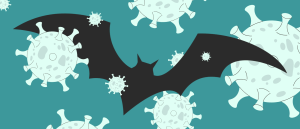The evolutionary patterns of a major malaria-transmitting mosquito species

Original story from the Wellcome Sanger Institute (Hinxton, UK).
Sequencing hundreds of Anopheles funestus mosquitoes provides new insights into the evolutionary patterns of this important human malaria-transmitting species.
New research into the genetics of Anopheles funestus (An. funestus), one of the most neglected but prolific malaria-transmitting mosquitoes in Africa, has revealed how this species is evolving in response to malaria control efforts.
Researchers from the Wellcome Sanger Institute (Hinxton, UK) together with leading scientists across Africa sequenced hundreds of An. funestus mosquitoes collected throughout the continent to explore the genetic variation in the species, including changes driving its adaptation to control methods. The results of the study provide a new understanding of An. funestus that can be used to inform further work towards malaria elimination in sub-Saharan Africa.
The mosquito species An. funestus is one of the most widespread in Africa. Females of the species are highly anthropophilic, meaning they are attracted to humans as a source of blood, which they need to develop their eggs. They also have a significantly longer lifespan than other malaria-transmitting mosquito species. An. funestus is also extraordinarily adaptive. For example, in some areas, it has evolved from biting indoors in the evening to biting outdoors during the day, likely in response to the use of mosquito nets. Together, these characteristics make them formidable malaria transmitters in the part of the world where malaria remains most devastating. In 2023, the World Health Organization African Region reported 569,000 malaria-related deaths.
Having a comprehensive understanding of the genetics of each major malaria-transmitting mosquito species is essential for implementing effective malaria control and preventing deaths.
To support this, mosquito biologists across Africa together with the team at the Sanger Institute collected and sequenced the whole genomes of 656 modern An. funestus mosquito specimens that were collected from 2014 to 2018. They also sequenced 45 historic specimens from the Natural History Museum (London, UK) and the French National Research Institute for Sustainable Development (IRD; Marseille, France) that were collected between 1927 and 1967 to understand the evolutionary patterns and changes in the species across 16 African countries during the last century.
 Bat organoid platform reveals more about zoonotic viruses
Bat organoid platform reveals more about zoonotic viruses
Engineered mini organs from the most common bat species have been developed to study infections by key viruses, including COVID-19 and influenza.
The team found high levels of genetic variation in An. funestus across Africa and discovered that samples originating from equatorial countries shared many genetic similarities despite covering a 4000 km range. This suggests that they likely belong to one large, interconnected population. However, some samples from this region, such as those from North Ghana and South Benin, were isolated and genetically distinct from the interconnected population. This shows some populations mix widely, while others remain separate. Such population structure has important implications for mosquito control.
By looking at the DNA of the historic samples, the team was able to highlight the fast-evolving nature of An. funestus. One key mutation linked to insecticide resistance, which is widespread among the modern populations, was already present in the mosquitoes from the 1960s. However, other mutations that make mosquitoes resistant to insecticides were absent from the historic mosquitoes, suggesting that these became beneficial for the mosquitoes only later, as different insecticides were used in subsequent decades.
New biological tools are being used to combat malaria, such as gene drives – a method for genetically modifying malaria-transmitting mosquitoes, spreading the modification through wild populations and ultimately, reducing their ability to transmit malaria. The team discovered that a key target for a gene drive in An. gambiae – another major malaria-transmitting mosquito species – is very similar in An. funestus. This is encouraging as it suggests that the doublesex gene drive system developed for An. gambiae can be adapted to work in An. funestus as well.
This new study describes how the genetics of An. funestus should inform future research and surveillance strategies that aim to reduce the spread of malaria. The data from this study have also been incorporated into the MalariaGEN Vector Observatory that hosts DNA data from multiple Anopheles species alongside tools for researchers to use in order to analyze data.
Marilou Boddé, first author and Postdoctoral Fellow formerly at the Wellcome Sanger Institute and now at Institut Pasteur de Madagascar (Antananarivo, Madagascar) and LIB Bonn (Germany), explained, “An. funestus is genetically complex and evolving fast under pressure from insecticide use. This work is progress in generating a foundational genomic understanding of An. funestus. The insights from this study are crucial for designing future tools that need to work across entire continents for the benefit of those living in countries affected by malaria.”
Mara Lawniczak, senior author and Senior Group Leader at the Wellcome Sanger Institute, concluded, “We find some mosquito populations readily sharing variation across the African continent, while others are close neighbors but genetically distinct. This is a challenge for vector control. Even if the Gambiae Complex disappeared today, malaria would still rage through Africa until An. funestus is also effectively targeted. We hope the greater understanding of the high levels of genetic diversity and the complex population structure we uncover here will underpin smarter surveillance and targeted vector control.”
This article has been republished from the following materials. Material may have been edited for length and house style. For further information, please contact the cited source. Our press release publishing policy can be accessed here.